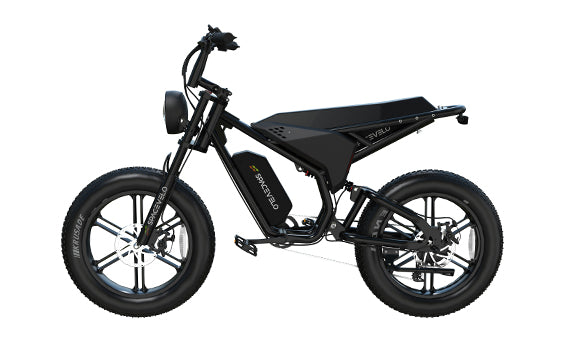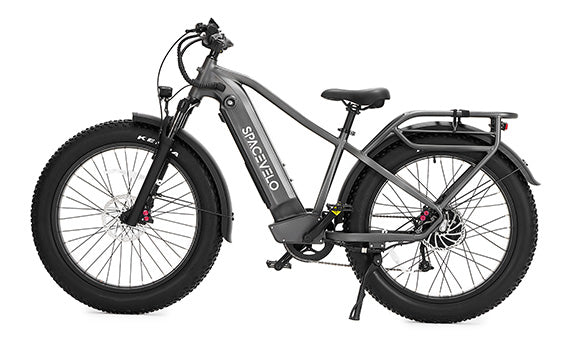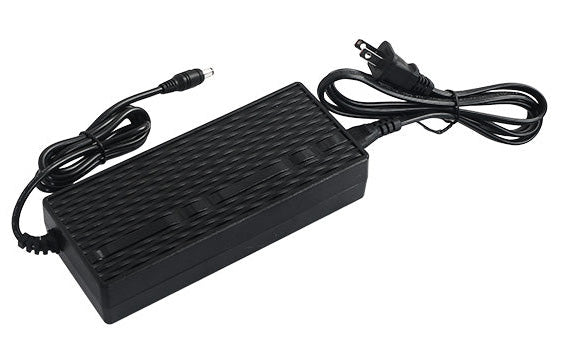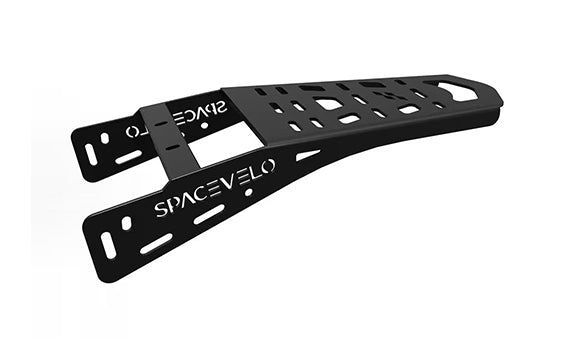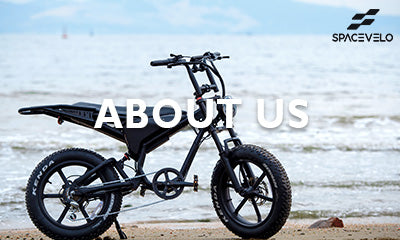Electric bikes have revolutionized personal transportation, offering a unique blend of human power and electric assistance. For many potential buyers, a central question dominates their research: How fast can an electric bike go? The answer is not a single number but a nuanced interplay of engineering, regulation, and environmental factors. This article provides a comprehensive breakdown of e-bike speed, moving beyond basic specifications to a deeper understanding of what determines velocity on the road.
The Regulatory Framework: Understanding E-Bike Classes
Before discussing power and performance, it's crucial to understand the legal classifications that define e-bike speed in the United States. Most states adhere to a three-class system, which fundamentally caps the motor-assisted speed:
-
Class 1: Pedal-Assist Only (Max assisted speed: 20 mph)
The motor provides assistance only when the rider is pedaling and ceases at 20 mph. This class is universally permitted on bike paths and trails and is ideal for recreational riders and commuters seeking a natural riding feel. -
Class 2: Throttle-Assist (Max assisted speed: 20 mph)
Equipped with a throttle (button or twist-grip) that can propel the bike without pedaling, up to 20 mph. The motor cuts off once this speed is reached. This class offers effortless operation, perfect for those who need a break from pedaling. -
Class 3: Speed Pedelec (Max assisted speed: 28 mph)
The motor provides assistance only when pedaling but supports higher speeds up to 28 mph. These are designed for commuters seeking to cover longer distances efficiently. Due to their higher speed, they are often subject to additional regulations, such as helmet mandates and age restrictions, and may be prohibited on certain bike paths.
Crucial Note: E-bikes capable of providing assistance beyond 28 mph are typically classified as electric mopeds or motorcycles, requiring registration, insurance, and a license. The models discussed here are consumer e-bikes adhering to the three-class system.
Engineering the Need for Speed: Key Technical Determinants
Within the legal limits, an e-bike's actual performance is governed by its core components:
-
Motor Power and Torque:
-
Power (Watts): A motor's wattage (e.g., 250W, 500W, 750W) indicates its potential power output. While a 750W motor has more potential than a 250W one, it doesn't automatically mean a higher top speed if it's governed by a Class 1-3 system. However, a more powerful motor will reach and maintain that governed top speed more easily, especially under load.
-
Torque (Newton-meters): Torque is the rotational force that determines acceleration and hill-climbing ability. A high-torque motor (e.g., 95 N·m) will feel more responsive and powerful, allowing you to quickly accelerate to the bike's top speed, even on inclines.
-
-
Battery Capacity and Voltage:
-
Voltage (V): Think of voltage as the "pressure" pushing electrical current. Higher voltage systems (48V or 52V are common in performance models) allow the motor to draw more power efficiently, contributing to stronger acceleration and better sustained performance at high speeds.
-
Capacity (Ah or Wh): Capacity (often measured in Watt-hours, Wh) is the "fuel tank." A larger capacity (e.g., 672Wh vs. 1440Wh in a dual-battery setup like the SpaceVelo Blitz S1) does not increase top speed but is critical for maintaining that top speed over a longer range without performance drop-off.
-
-
Bike and Rider Dynamics:
-
Rider Weight and Cargo: Heavier loads require more energy to accelerate and maintain speed. A rider with a light load will experience snappier performance compared to one carrying heavy cargo.
-
Terrain: Flat, smooth pavement offers minimal resistance. Hills, headwinds, and soft surfaces (like gravel or grass) significantly sap speed and battery energy, reducing average speed.
-
Tire Pressure and Type: Properly inflated, smooth-rolling tires create less friction, enabling higher efficiency and speed compared to under-inflated or knobby off-road tires.

-
High-Performance E-Bikes in Context
Standard e-bikes operate within the 20-28 mph assisted range. However, the experience of riding a high-performance model like the SpaceVelo Blitz S1 is markedly different from a budget-friendly option. While both may be governed to a Class 3 limit of 28 mph, the high-performance model will:
-
Reach that speed much more quickly due to its powerful motor and high torque.
-
Hold that speed effortlessly on rolling hills and against wind.
-
Provide a stable, confident ride at high speeds thanks to its robust frame, quality suspension, and superior hydraulic disc brakes.

Safety at Speed: A Non-Negotiable Priority
Riding at higher speeds demands a heightened focus on safety.
-
Helmet: A helmet is essential. For Class 3 e-bikes, a certified, high-quality helmet is strongly recommended.
-
Braking System: Hydraulic disc brakes are the gold standard. They offer consistent, powerful stopping power in all weather conditions, which is critical for controlling a heavier e-bike at 28 mph.
-
Protective Gear: Consider gloves, eye protection, and even padded clothing for regular high-speed commuting.
-
Visibility: Use high-lumen front and rear lights, even during the daytime. Add reflective elements to your clothing and bike.
-
Rider Awareness: At higher speeds, your reaction time decreases. Be hyper-aware of your surroundings, anticipate the actions of cars and pedestrians, and signal your intentions clearly.
Final Verdict
So, how fast can an electric bike go? For the vast majority of legal, consumer-grade e-bikes, the answer is a governed 20 mph or 28 mph with motor assistance. Yet, the true measure of a fast e-bike isn't just its top speed—it's the power that gets you there, the stability that keeps you secure, and the efficiency that maintains that pace.
When choosing a performance-oriented e-bike, look beyond the top speed number. Evaluate the motor torque, battery voltage, and overall build quality to ensure you're getting a machine that delivers speed safely and reliably. Brands like Spacevelo engineer their bikes to hit the legal limits with authority, providing an exhilarating yet compliant and secure riding experience that truly expands your horizons.

